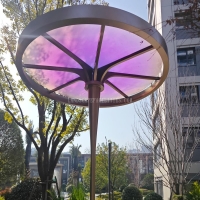Welcome to the website for landscape facilities products and knowledge.
How does the bin’s design ensure that it can be used in areas with high humidity?
Bins designed for high-humidity environments incorporate several key features to ensure longevity and functionality. First, they use moisture-resistant materials like marine-grade stainless steel, powder-coated metals, or specially formulated plastics that resist water absorption and microbial growth. Many models include ventilation systems that allow air circulation to prevent condensation buildup inside the container.
The structural design often features sloped surfaces and drainage channels to direct water away from critical areas, while elevated bases keep the bin from sitting in standing water. For metal components, manufacturers apply advanced anti-corrosion treatments such as galvanization or epoxy coatings.
Hinges and moving parts are typically made from non-ferrous metals or heavy-duty polymers to prevent rusting. Some high-end models even incorporate UV-resistant additives to protect against both humidity and sun exposure. These design elements work together to create waste containers that maintain structural integrity and hygienic conditions even in tropical climates or coastal areas with constant high humidity.
The best humidity-resistant bins also feature seamless construction to eliminate moisture-trapping crevices and smooth surfaces that discourage mold growth. This comprehensive approach to material selection and engineering ensures reliable performance in challenging environmental conditions.
Related search:

Recommendation
Metal frame with gradient color acrylic combined with high-end shading landscape facilities